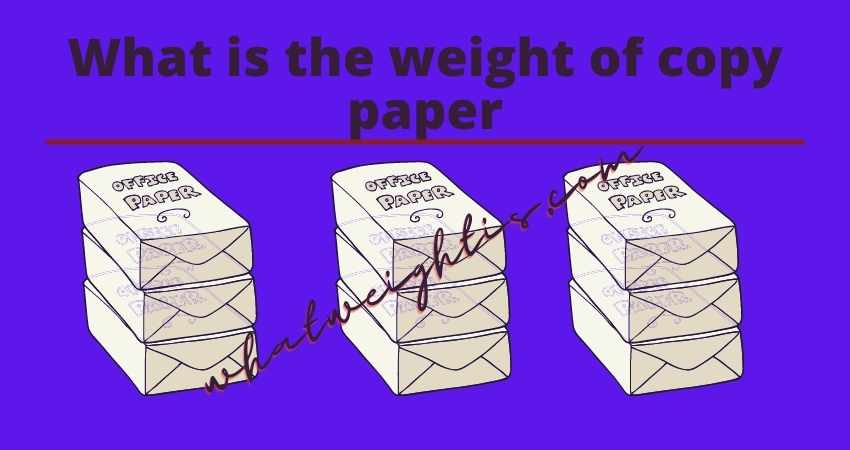While most modern offices use digital documents, printing is still a frequent necessity. Copying is helpful in producing multiple copies of documents, books and other reading materials. When you are buying new paper for your office or home copier, it’s helpful to know the weight of copy paper. This measurement indicates how thick the stock is, which can impact the quality, quantity and cost of your paper supply. Depending on the type of copier you have in your office or home and your personal preference, there are different types of copy paper available on the market. Each type has its own properties that affect its weight. To keep things simple, here is an overview of the different types of copy paper with their standard weight in pounds per ream:

What is the difference between copy paper and printer paper?
Both copy paper and printer paper are made for use in a variety of office machines. They are often used interchangeably by office workers, but each paper type is best suited to a specific machine. Printer paper is best used in laser printers, which use heat and pressure to create images and text on the paper. In comparison, copy paper excels at being placed in copiers, which work with a combination of heat and pressure to create multiple copies of a single image. This difference in manufacturing process creates variations in copy paper and printer paper that are visible to the naked eye. Copier paper is thicker than printer paper, which makes it ideal for use in machines that apply heat and pressure.
How much does a ream of copy paper weigh?
As stated above, the weight of a ream of copy paper depends on the type. Generally speaking, a ream of light-weight paper is around 1 pound, while a ream of high-end copy paper comes in at around 1 to 2 pounds.
Types of Copy Paper
There are several different types of copy paper on the market, each with their own unique set of characteristics. Some types of copy paper excel at printing high-quality images and text, while others are more efficient for bulk printing jobs. Light-weight copy paper – This is the most common type of paper, making up almost 60% of sales in the United States. Light-weight paper is best used in offices that print a moderate number of documents each day. Writing paper – This type of paper is most common in offices where printed reports play a large role in the workflow. Writing paper produces crisp, clear images and text, and is a good choice for high-quality printing. High-end paper – This type of paper is primarily used in offices that print high volumes, or for large printing jobs. High-end paper has a high weight, which makes it ideal for high-volume use.
Why does weight matter for copy paper?
The weight of copy paper plays an important role in determining both its quality and cost. Generally, the heavier the paper, the better the quality. The heavier weight paper is also more expensive, but it is a worthy investment for offices that print frequently. Heavy paper like high-end paper is ideal for printing high volumes, while light-weight paper is best for moderate printing. If you select a heavy paper but don’t print many pages, you’ll end up wasting money on a higher cost per ream. Having the correct paper weight is essential in getting the best prints possible. It also saves you money in the long run by lowering the cost per page and increasing the longevity of your machine.
Summary
Copy paper is an essential component of any office’s printing supply. Knowing the weight of different types of paper is helpful in purchasing the correct paper for your machine. When buying paper, you should consider the weight of each type to find the best fit for your office’s needs. When you know the weight of copy paper, you can shop for the best bang for your buck.
